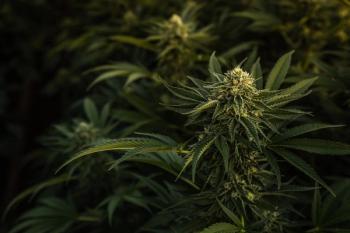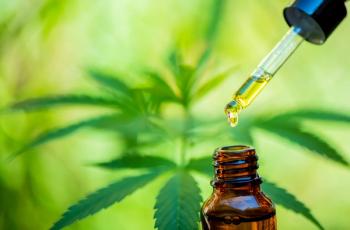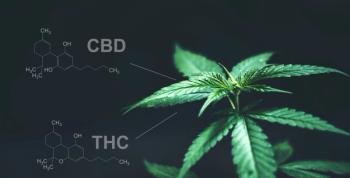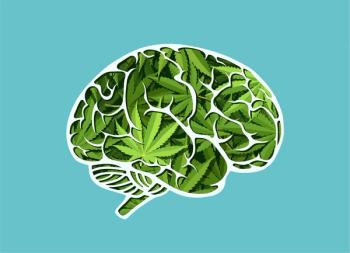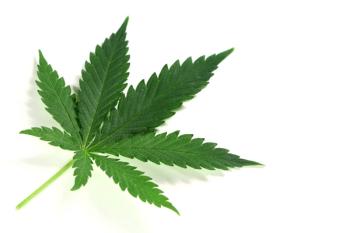
- November/December 2022
- Volume 3
- Issue 4
- Pages: 8-13
Cannabis for Anxiety and PTSD
Dr. Dustin Sulak discusses his clinical experience with cannabis as a treatment for anxiety and PTSD as well as some of the clinical evidence surrounding the endocannabinoid system.
Anxiety, Trauma, and the Endocannabinoid System
Anxiety disorders are the most common type of psychiatric disorders, and they’re one of the most common conditions for which people use cannabis. One review found that among 6665 cannabis users with data collected from 13 different studies, 52% of the subjects reported using cannabis for anxiety, making it the second most commonly treated symptom, following pain (1). Anxiety disorders come in many forms, including generalized anxiety, social anxiety, and panic disorders.
While symptoms vary depending on the specific anxiety disorder, it’s been my clinical experience that any of the anxiety disorders can be treated with a high rate of success when cannabis is used appropriately. Perhaps this is related to the high density of cannabinoid type 1 (CB1) receptors in a brain region called the amygdala and in the sympathetic (that is, fight or flight) centers of nervous system. The amygdala plays a large role in modulating fear and anxiety, and its response to anxiety-provoking cues is exaggerated in people with anxiety disorders; stimulating CB1 can dampen this excessive activity. Similarly, the sympathetic nervous system contains CB1 receptors that will also dampen excessive activity related to the physical effects of anxiety like racing heart rate, sweating, or trembling.
Though they are closely related to anxiety disorders, the Diagnostic and Statistical Manual of Mental Disorders, 5th edition (DSM-5) created a new category for “trauma- and stressor-related disorders” that includes acute stress disorder and post-traumatic stress disorder (PTSD) (2). These conditions develop as an abnormal adaptation to a traumatic event and symptoms include intrusive thoughts, nightmares and flashbacks, avoidance of reminders of the trauma, negative changes in cognition and mood, irritability, and increased sensitivity and reactivity known as hypervigilance, a perpetual scanning of the environment to search for anything threatening.
Like anxiety disorders, evidence suggests endocannabinoid system (ECS) dysfunction may contribute to trauma-related disorders. Reduced blood levels of the endocannabinoid anandamide (AEA), abnormal CB1 receptor signaling, and a compensatory increase of CB1 receptor availability are associated with PTSD and correlate with the degree of intrusive symptoms (3). For example, in one study of 46 individuals in close proximity to the World Trade Center at the time of the 9/11 attacks, the 24 subjects who met diagnostic criteria for PTSD had significantly lower circulating levels of the endocannabinoid 2-AG than those who did not have PTSD. Those with the lowest levels of AEA levels had the most intrusive symptoms, consistent with animal data indicating that reductions in AEA promote retention of aversive emotional memories (4).
Although anxiety disorders are categorized separately from trauma-related disorders in the allopathic psychiatry model, in my experience, most anxiety symptoms can be traced to traumatic or overwhelming experiences and the behavioral patterns that emerge thereafter. I suspect that regardless of the diagnosis, cannabis is likely working similarly in people with anxiety disorders or trauma-related disorders: dampening the anxiety response to certain cues or triggers, reducing the intensity of fight or flight symptoms, perhaps preventing the development of PTSD after a traumatic event, and, as described below, healing the traumatic memories themselves.
Why Does Cannabis Succeed Where Other Treatments Fail?
PTSD is often resistant to traditional antidepressant and anti-anxiety medications, in part because these treatments fail to address memory-related dysfunction seen in people with PTSD, such as the inability to extinguish learned fear responses, to suppress retrieval of traumatic memories, to acquire safety signals, and to dampen the over-consolidation1 process taking place right after reexperiencing symptoms. [*Note that consolidation is the process of transforming a short-term memory into a long-term memory. People who re-experience trauma can increase the consolidation of the traumatic memory with each re-experiencing episode, worsening the condition.]
The ECS is an important part of our ability to extinguish the emotional charge behind, and even forget our traumatic memories. Cannabinoids may be ideal for treating PTSD due to their dual anti-anxiety and memory-modulating effects. Animal and early clinical research have produced encouraging results targeting the extinction of fear memories, which could “reduce the conditioned fear and anxiety responses triggered by trauma reminders, increasing patients’ general ability to actively cope with the trauma without affecting the original memory trace” (5).
Furthermore, cannabis is safer than many anxiety drugs, especially those in the benzodiazepine class (such as Xanax or Valium) which, with long-term use, can cause dependence, neurotoxicity, cognitive and memory problems, and more. Patients are often successful replacing these dangerous anxiety medications with cannabis, and are motivated to do so because cannabis works better and has fewer side effects. One study found that 45% of benzodiazepine users stopped the drugs completely after starting medical cannabis (6). Another survey of 1513 dispensary members revealed that 71.8% of respondents reduced their intake of anti-anxiety medications (7).
A Double-Edged Sword
The use of tetrahydrocannabinol (THC)-dominant cannabis has been associated with both anti-anxiety effects at lower doses and anxiety-causing effects at higher doses (8). Clearly, THC overdose often produces severe anxiety and paranoia; even though people often are certain they’re dying and require emergency medical care, that’s rarely the case.
For most people, there’s a wide range between a relaxing dose and an anxiety-producing dose.
Cannabis users who ingest drops, edibles, or capsules might have to consume 2-3 times their normal anti-anxiety dose or more to experience this paradoxical effect. Inhaled cannabis can be a little touchier for some people with anxiety. The rapid onset of anti-anxiety relief after smoking or vaporizing makes this an appealing route of administration, but small differences in the type of cannabis being inhaled or the total dose can swing some sensitive individuals into worse anxiety.
I’ve spoken with several patients who experience this side effect and think the best strategy is just to “deal with it.” They inhale cannabis, feel more anxious for 10-30 minutes, then appreciate the anti-anxiety effects in the following 1-3 hours. At the end of the article I provide practical solutions for people who can relate to this; most are able to modify their use pattern to achieve all relief and no exacerbation of symptoms.
While the bidirectional dose-response effect on anxiety may be most evident for THC-dominant cannabis, pharmaceutical-grade cannabidiol (CBD) has also demonstrated similar dose–response trends (9). For example, in one study of healthy subjects, a 300-mg dose of CBD was associated with improvements in anxiety scores compared to placebo during public speaking, while a 900-mg dose was associated with increased anxiety scores compared to placebo (10). These doses are not practical or necessary for most people; the more standard range of CBD dosing for anxiety, 10–50 mg up to 3x daily, is likely to help reduce and unlikely to increase anxiety.
Fear-Extinction
As mentioned above, the ability to unlearn, or extinguish, fearful memories and their associated responses is an important part of the healing process in trauma-related disorders. This type of healing is often the goal of several non-pharmacological treatments like eye movement desensitization and reprocessing (EMDR), prolonged exposure therapy, cognitive and behavioral therapy (CBT), and emotional freedom technique. Several experimental human studies have indicated that cannabinoids can also be helpful in fear extinction, potentially improving the benefits of some of these other types of therapy when used together.
For example, a single 7.5-mg dose of THC administered 2 hours before fear extinction treatment, compared to placebo, resulted in significantly decreased threat responses 1 day and 1 week later, accompanied with functional brain imaging data showing a significant effect on the connectivity of threat-detection networks (11). Another study found that 32 mg of inhaled CBD enhanced consolidation of fear extinction learning in humans (12). Both suggest that cannabinoids may have potential as an adjunct to extinction-based therapies for anxiety and trauma disorders.
Another study found that among 136 individuals receiving cannabitriol (CBT) for co-occurring PTSD and substance use disorders, higher cannabis use was associated with greater PTSD symptom severity early in treatment but lower PTSD symptom severity later in treatment. The authors suggested that cannabis may have interacted synergistically with psychological treatment to reduce PTSD symptoms (13).
It’s important to remember that for those of us with anxiety and trauma-related symptoms, life is therapy, or at least it can be. We frequently encounter situations that trigger anxiety or intrusive thoughts; how we respond to these challenges determines whether the experience is healing or harmful. After talking to thousands of cannabis users in my clinic, I’m certain that cannabis can be intentionally used to increase the likelihood of healing.
For example, I’ve worked with a 34-year-old veteran who was injured by a roadside explosion in the Middle East. He returned to civilian life with recurrent episodes of extreme distress, most commonly triggered by visual stimuli while driving, such as a red flag tied to the end of lumber extending from the back of a pickup truck. These episodes were debilitating until he started using cannabis. He explained that every time he was triggered in this way, he would pull over, take an inhalation or two of THC-rich cannabis from a pipe he kept in his car, and then meditate for 15–30 min before continuing on his way (assuring me he avoided driving until any potential impairment had subsided). One day he was proud to report that seeing a red flag on the way to the office visit, for the first time since his injury, elicited no adverse response. Perhaps his use of cannabis with every trigger enhanced “fear extinction learning”—he was able to learn that the visual stimulus was actually non-threatening.
Clinical Evidence
Surprisingly little high-quality research has directly evaluated the effects of medical cannabis on symptoms in patients with anxiety and trauma-related disorders, though the evidence is growing.
More studies have evaluated the use of nabilone, a synthetic THC analogue with better absorption, in patients with anxiety and PTSD than we’ve seen with herbal cannabis.
For example, a placebo-controlled crossover trial of nabilone (0.5–3 mg at bedtime) in 10 military personnel with PTSD demonstrated a significant reduction in nightmares, improvement in general well-being, and improvement in Clinical Global Impression of Change scores (14).
Another double-blind trial of 20 patients with anxiety treated with nabilone (1 mg three times daily) demonstrated dramatic improvement in anxiety in the nabilone group when compared with placebo (15).
In an observational study of six patients requiring multiple antidepressants for mixed anxiety and mood disorders, nabilone titrated from just 0.25 mg to 1 mg at bedtime showed an average improvement in Generalized Anxiety Disorder scores of 26.5% over 6 months (16). This supports my observation that some patients with anxiety are able to use cannabis in the evening with residual improvements in symptoms the following day, and that the response to this dosing strategy continues to improve over months.
In a larger retrospective study of 104 incarcerated men with serious mental illness, treatment with nabilone (average of 4 mg daily) led to significant improvement in PTSD-associated insomnia, nightmares, PTSD symptoms, and Global Assessment of Functioning scores, as well as improvements in chronic pain. Many of their other medications were able to be discontinued, and there was no evidence of nabilone abuse or diversion. The authors found it particularly noteworthy that, in virtually all subjects, nabilone targeted several symptoms simultaneously (average 3.5 symptoms per participant) (17), an outcome we’re used to seeing with cannabis treatments.
Other small studies have evaluated synthetic THC. For example, an open-label pilot study carried out in 10 patients with chronic PTSD, on stable medication, found that adding on 5 mg of THC twice a day led to statistically significant improvements in global symptom severity, sleep quality, frequency of nightmares, and PTSD hyperarousal symptoms (18).
There’s also some evidence from controlled studies using high-dose, purified CBD. For example, in one placebo-controlled study of 24 treatment-naïve patients with generalized social anxiety disorder, pretreatment with600 mg of CBD before a simulated public speaking test significantly reduced anxiety, cognitive impairment, and discomfort in speech performance (19).
Not all clinical evidence supporting cannabis for anxiety and trauma-related disorders comes from studies using isolated compounds. Eight cross-sectional studies evaluating the use of cannabis or cannabis-derived products reported relief of anxiety as a primary or secondary benefit (20). A retrospective study analyzing PTSD symptoms collected during 80 psychiatric evaluations of patients applying to the New Mexico Medical Cannabis Program during 2009–2011 identified >75% reduction in Clinician-Administered PTSD Scale for DSM-IV symptom scores when patients with PTSD were using cannabis compared to when they were not (21).
Dr. Sue Sisley and colleague’s long-awaited cannabis for military veterans with PTSD clinical trial was finally published in 2021. The trial compared four types of cannabis cigarettes: THC-dominant (type I), mixed THC/CBD (type II), CBD-dominant (type III), and placebo cannabis. Interestingly, all treatment groups (including placebo) achieved statistically significant reductions in PTSD severity. The improvements measured at 3 weeks were much greater than those reported in other drug trials for PTSD at 10 weeks (22). Due to the excellent response in the placebo group, the headlines surrounding this publication indicated the cannabis treatment was ineffective. Though the results in the placebo group are thought-provoking, this study did confirm the benefits reported by so many veterans who smoke cannabis for this purpose.
Regarding CBD-dominant cannabis treatment, a large case series found that CBD at doses of 25–175 mg/day reduced anxiety scores in 57 of 72 patients (23). Another case series on 11 adult patients with PTSD found an average of around 50 mg of CBD, added to their routine psychiatric care, reduced symptoms in 10 patients by an average of 28% after 8 weeks of treatment (24).
Finally, a recent open-label study followed 2820 subjects who used one of 13 brands of CBD products (including Healer) over four weeks, and collected survey responses on pain, anxiety, sleep, and quality of life. The results of those taking CBD products were compared with a control group of individuals on a wait list. Among those with anxiety, 46.6% of those using a CBD product experienced a clinically relevant improvement in their anxiety score, compared to 19.6% in the wait list group (25).
For some people, using a CBD-dominant preparation for anxiety may require fairly high doses, which can become cost-prohibitive. Though it hasn’t been directly studied in humans, my clinical observations also suggest cannabidiolic acid (CBDA) can help with anxiety, often at much lower doses than CBD. Some rodent data support this observation; one study found CBDA prevented the anxiety response to a specific trigger at a dose of 1 μg/kg, while the dose of CBD required to achieve the same effect was 5000 μg/kg (26). This is likely because CBDA also impacts the same 5-HT1A serotonin receptor as CBD, but much more potently.
When Cannabis Brings Trauma to the Surface
Consistent with the often-observed paradoxical effects of cannabis, it’s clear that for some people, at certain times, cannabis can provoke the surfacing of long-ago buried traumatic memories. I’ve listened to many reports of adults who have had years or decades of a relationship with cannabis that has reduced trauma-related symptoms and permitted improved function and quality of life, and then something changes. Often suddenly, though sometimes gradually, cannabis begins doing the opposite, increasing anxiety and remembering or re-experiencing traumatic memories.
My understanding of the healing nature of cannabis and observation of patients have always suggested that cannabis is more likely to have this effect when the individual becomes ready to heal the cause of the anxiety, usually trauma, and can ultimately derive more benefit from cannabis by addressing the underlying cause than simply relieving symptoms. As our self-understanding and self-love develops and we cultivate more supportive resources in our lives, our readiness to deal with the underlying trauma increases.
My recent work with a modality called Psychedelic Somatic Interactional Psychotherapy (PSIP) (27) confirmed my hypothesis and provided a framework for taking advantage of cannabis’ capacity to encourage the surfacing of old trauma. PSIP is a model of trauma therapy based in-part on the concept that some traumatic events are so overwhelming that aspects or layers of our psyche become dissociated (checked-out) to more easily deal with the intense terror and anxiety. While this can be adaptive in the short-term, over time it limits our capacity to fully feel like and act like ourselves. As we move towards healing, self-acceptance, and loving relationships, these limitations may become more apparent bottlenecks in our ability to live fully, and eventually our health attempts to re-integrate the dissociated parts.
Often, the process of reclaiming these lost parts of ourselves requires us to move from a comfortable but limited state of dissociation, back into the feelings of intense terror and anxiety associated with the trauma, and then finally back to a neutral, integrated state. The PSIP technique allows the soma (physical body) to express involuntary activity such as shaking, crying, vocalizations, and physically re-enacting aspects of old trauma, which can be very helpful in proceeding through these uncomfortable feelings and back to wholeness, instead of just visiting them and quickly retreating back into dissociation.
Of all the psychedelic-like substances that can facilitate this healing process, cannabis appears to be the strongest and most effective at catapulting these dissociated parts into the often-uncomfortable light of healing.
Strategies for Success
The following tips can help people with anxiety or PTSD get the best results with cannabis. For those who are used to using only inhaled cannabis for anxiety, I strongly recommend becoming familiar with and finding your optimal dose of cannabis drops or another oral or oromucosal product. Healer.com offers complimentary dosage programs that guide users through a process that will help you find your individualized, optimal dose.
- One of the most important strategies for success is to prevent symptoms, instead of chasing them around, with low to moderate oromucosal or oral dosing 2–3 times daily. Many patients do well with CBD-dominant preparations in the daytime (10–50 mg per dose) and THC-dominant preparations before bed (5–25 mg). Many people also do well with THC-dominant preparations during the day, often at 1/4 to 1/3 of the dose required for sleep (such as 1–5 mg), which rarely causes any unwanted psychoactivity or impairment, and can be more cost effective than CBD for some.
- For people who require high doses of CBD or don’t find that CBD helps with anxiety in the doses they’ve tried, CBDA may provide better anti-anxiety results at much lower doses, for example, 5–20 mg.
- Cannabigerol (CBG)-dominant preparations can be very effective for relieving and preventing anxiety and trauma-related symptoms, especially the physical manifestations of anxiety. I see responses at doses as low as 5 mg, though some do well with up to 40 mg per dose.
- Low-dose inhaled cannabis can be extremely helpful for breakthrough anxiety symptoms and, in the experienced user, to abort panic attacks and intense re-experiencing symptoms. This can be especially effective when the inhaled cannabis is followed by a relaxation technique.
- I have observed nearly universal success reducing or resolving trauma-related nightmares and sleep disturbance with THC-dominant oral preparations, usually in the 5-25 mg range. This essential priority often yields global improvements in symptoms around the clock.
- For people who inhale THC-dominant cannabis, selecting the right variety can be essential. Some THC-dominant varieties are known for their anti-anxiety effects, while others are commonly anxiety-producing. Inhaling CBD-dominant or mixed THC/CBD cannabis can also work very well with less risk of worsening anxiety.
- Concurrent nonpharmacological treatments, such as cognitive and behavioral therapies, breathing exercises and meditations, biofeedback, and physical exercise, are likely to improve to effectiveness of cannabis. Videos teaching some of these techniques can be found at Healer.com/wellness.
Cautions
- High doses and inhaled delivery of THC-dominant cannabis, including cannabis concentrates, and are most likely to acutely increase anxiety.
- Long-term, high-dose cannabis use that leads to tolerance may worsen baseline anxiety symptoms over time and increase the likelihood of anxiety symptoms during withdrawal. To learn how to reverse and avoid cannabis tolerance, see my Sensitization Protocol at Healer.com/programs/sensitization-protocol/.
- In certain individuals with trauma-related conditions, cannabis use may increase avoidant behaviors. Regularly engaging in safe and supportive social interactions is essential, even if uncomfortable at first.
Conclusion
Dysfunction in the ECS may predispose people to developing anxiety and trauma-related disorders, and using cannabis to target the ECS in these conditions can address both the symptoms and support a healing process of the underlying problems. Human experiments also suggest that cannabinoids can be helpful as an adjunct to therapy. People often use cannabis to replace benzodiazepines and other anxiety drugs, and increasing evidence suggests hemp-based CBD or CBG products can be effectively used for anxiety at low or moderate doses.
Usually, cannabis will relieve anxiety and trauma-related symptoms, but sometimes it can bring traumatic feelings or memories to the surface for the purpose of healing. I’ve provided a framework for understanding this phenomenon and suggestions for how to get great results using cannabis for both symptom relief and healing.
It’s no surprise that anxiety is one of the most common symptoms for which people use cannabis. It’s usually safer, more effective, and more deeply healing than the alternatives, especially when it’s used optimally.
References
- J.D. Kosiba, S.A.Maisto, and J.W. Ditre, Social Science & Medicine 233, 181–192 (2019).
https://doi.org/10.1016/j.socscimed.2019.06.005 . - American Psychiatric Association, The Diagnostic and Statistical Manual of Mental Disorders, Fifth Edition (DSM-5) (2013).
- L. Orsolini, S. Chiappini, U. Volpe, D. De Berardis, R. Latini, G.D. Papanti, and J.M. Corkery, Medicina 55(9), 525 (2019).
- M.N. Hill, L.M. Bierer, I. Makotkine, J.A. Golier, S. Galea, B.S. McEwen, and R. Yehuda, Psychoneuroendocrinology 38(12), 2952-2961 (2013).
- A. Berardi, G. Schelling, and P. Campolongo, Pharmacological Research 111, 668–678 (2016).
- C. Purcell, A. Davis, N. Moolman, and S.M. Taylor, Cannabis and Cannabinoid Research, 4(3), 214-218 (2019).
- B.J. Piper, R.M. DeKeuster, M.L. Beals, C.M. Cobb, C.A. Burchman, L. Perkinson, and A.T. Abess, Journal of Psychopharmacology 31(5), 569-575 (2017).
- J. Allen, M.D. Holder, and Z. Walsh, in The Handbook of Cannabis and Related Pathologies, V.R. Preedy, Ed. (Elsevier, 2017) pp. 308–316.
- I.M. Linares, A.W. Zuardi, L.C. Pereira, R.H. Queiroz, R. Mechoulam, F.S. Guimaraes, and J.A. Crippa, Brazilian Journal of Psychiatry 41(1), 9-14 (2019).
- A.W. Zuardi, N.P. Rodrigues, A.L. Silva, S.A. Bernardo, J.E. Hallak, F.S. Guimarães, and J.A. Crippa, Frontiers in Pharmacology 8, 259 (2017).
- M.Z. Hammoud, C. Peters, J.R.B. Hatfield, S.M. Gorka, K.L. Phan, M.R. Milad, and C.A. Rabinak, Neuropsychopharmacology 44, 1769–1777 (2019).
https://doi.org/10.1038/s41386-019-0416-6 - R.K. Das, S.K. Kamboj, M. Ramadas, K. Yogan, V. Gupta, E. Redman, and C.J. Morgan, Psychopharmacology 226(4), 781-792 (2013).
- L.M. Ruglass, A. Shevorykin, V. Radoncic, K.M. Smith, P.H. Smith, I.R. Galatzer-Levy, and D.A. Hien, Journal of Clinical Medicine 6(2), 14 (2017).
- R. Jetly, A. Heber, G. Fraser, and D. Boisvert, Psychoneuroendocrinology 51, 585-588 (2015).
- L.F. Fabre and D. McLendon, The Journal of Clinical Pharmacology21(S1), 377S–382S (1981).
- M. Lee, European Journal of Pain 13, S200, Article 695 (2009).
https://doi.org/10.1016/S1090-3801(09)60698-4 - C. Cameron, D. Watson, and J. Robinson, Journal of Clinical Psychopharmacology 34(5), 559 (2014).
- P. Roitman, R. Mechoulam, R. Cooper-Kazaz, and A. Shalev, Clinical Drug Investigation 34(8), 587-591 (2014).
- M.M. Bergamaschi, R.H.C. Queiroz, M.H.N. Chagas, D.C.G. De Oliveira, B.S. De Martinis, F. Kapczinski, and R. Martín-Santos, Neuropsychopharmacology 36(6), 1219-1226 (2011).
- Z. Walsh, R. Gonzalez, K. Crosby, M.S. Thiessen, C. Carroll, and M.O. Bonn-Miller, Clinical Psychology Review 51, 15-29 (2017).
- G.R. Greer, C.S. Grob, and A.L. Halberstadt, Journal of Psychoactive Drugs 46(1), 73–77 (2014).
- M.O. Bonn-Miller, et al., PloS One 16.3 (2021): e0246990.
- S. Shannon, N. Lewis, H. Lee, and S. Hughes, The Permanente Journal 23, 18–041 (2019).
- L. Elms, S. Shannon, S. Hughes, and N.Lewis, The Journal of Alternative and Complementary Medicine 25(4), 392-397 (2019).
- J.L. Saleska, et al. Integrative Medicine Reports 1.1, 215-226 (2022).
- E.M. Rock, et al. Psychopharmacology 234.14, 2207-2217 (2017).
https://www.psychedelicsomatic.org /
About the Author
Dustin Sulak, DO, one of the first physicians in Maine to incorporate the legal use of cannabis as a medicine in 2009, is the founder of Integr8 Health, a medical practice that follows more than 8000 patients using medical cannabis. Today he is globally recognized by his peers as a pioneer of clinical applications, formulations, and usage protocols. He is the author of the first foundational text on the clinical use of cannabis and cannabinoid therapies, titled Handbook of Cannabis for Clinicians: Principles and Practice. Dr. Sulak is co-founder of Healer, a medical cannabis brand founded to address the challenges of helping patients and health providers get the best results with safe, reliably dosable products and education on how to best use them. Healer’s distinctive product formulations and educational material are based on his work. Healer medical cannabis products are currently available in Maine and Maryland. Healer Whole Plant Hemp CBD products are available nationwide. For more information about Healer medical cannabis products, visit
visit
Articles in this issue
about 3 years ago
Cannabis Patient Care November/December 2022 Digital Editionabout 3 years ago
The Facts About PTSD and CannabisNewsletter
Unlock the latest breakthroughs in cannabis science—subscribe now to get expert insights, research, and industry updates delivered to your inbox.

